Matador Network's Blog, page 735
December 7, 2020
Taiwan fine for breaking quarantine

If you think that mandatory quarantines are not enforced, think again. In Kaohsiung City, Taiwan, one man was quarantined in a hotel when he stepped out of his room into the hallway for eight seconds and was caught on camera by CCTV hotel staff. The staff immediately called the Department of Health to report him, and he was fined $3,500.
The man, a migrant worker from the Philippines, was supposed to be quarantined in his hotel room without leaving, and Taiwan does not bend the rules even one tiny bit when it comes to COVID-19.
The country has received praise for its handling of the COVID-19 pandemic, without enacting strict lockdowns like other nations. Taiwan’s response was defined by speed, with authorities starting to screen passengers on direct flights from Wuhan as early as December 31, 2019. The government also invested in mass testing and contact tracing.
Quarantining for incoming visitors, however, is part of Taiwan’s method for controlling the spread of the virus, and they clearly aren’t messing around. In Kaohsiung City alone there are 56 designated quarantine hotels and 3,000 rooms set aside for quarantining individuals. 
More like thisFood + Drink23 Taiwanese foods the rest of the world should know and love
The post Taiwan fined a man $3,500 for breaking COVID-19 quarantine for eight seconds appeared first on Matador Network.

Winter desserts around the world

Few things are as satisfying as a hot sweet dessert after the leaves have fallen from the trees and the temperature drops low enough that walking outside without a sweater is a no-go. Sure, Swiss winter foods like raclette and the many soups from around the world are nice on a cold day, but only a hot dessert can satisfy both a sweet tooth and the need for warmth.
Exactly what type of sweet snack is served in the colder months depends on what part of the world you’re in. Many cultures have a version of hot fried dough while some prefer stuffed pancakes or rice pudding. One thing is consistent, however: Where there is cold weather, there are warm desserts (and sometimes even where there is not cold weather).
These are the most warming winter desserts from around the world.
1. Oliebollen from the Netherlands

Photo: Poleijphoto/Shutterstock
Oliebollen is similar to a doughnut. The name translates to “oil bulbs,” and the dessert consists of fried balls of dough dusted with powdered sugar. Some are filled with custard, Nutella, or fruit. These warm and indulgent treats are sold throughout winter in the Netherlands. The most popular place to get oliebollen is from oliebollenkramen, which are pop-up winter food stalls that primarily sell, as the name suggests, oliobollen.
Two popular stories exist to explain how oliebollen came to be a popular Dutch treat. One is that they were brought to the country by Jewish refugees fleeing Portugal in the early 1500s. The other is that, in pagan times, a popular story proliferated about the spirit Perchta slicing people’s stomachs open to steal their food. Oliebollen were so oily that Perchta’s sword slid off the skin before it could cut into a person. While oliebollen won’t save you from a fate like that, they will satisfy your sweet tooth.
This particular Dutch winter food has a special connection to New Year’s Eve, but oliebollen are worth a try whenever you have a chance to eat them.
2. Sombi from Senegal

Photo: Fanfo/Shutterstock
This sweet Senegalese rice pudding is an adaptable year-round dish. It’s served cool in warmer months, but freshly cooked sombi is served warm right off the heat in cooler months. Recipes vary depending on who is making the dish, but the base ingredients of sombi include rice, sugar, and cream or coconut milk. The ingredients are cooked over low-to-medium heat and served as soon as the rice is soft.
According to The African Gourmet, sombi is especially popular among the Toucouleur, Wollof, and Jakhanke Senegalese communities. Sombi made with local red rice is common during weddings. As Saveur notes, bowls of sombi are often eaten for breakfast or as a snack, though it’s delicious anytime you want something warm and sweet.
3. BeaverTails from Canada

Photo: Awana JF/Shutterstock
BeaverTails get their name from their appearance rather than any ingredients that come from the animal itself. They’re similar to a doughnut and are made with a sweetened whole wheat flour dough that’s stretched into the shape of a beaver’s tail. The dough is deep fried and, depending on your preferences, topped with a sugar-cinnamon mix, a chocolate hazelnut spread, maple cream, crushed bits of candy bars, fruit, or any other toppings that are readily available. It’s served hot and ready to warm you up during a frigid Canadian winter.
BeaverTails don’t have the same long history as some of the other classic warm winter desserts on this list, but that doesn’t make them any less worthy. The dessert was created in 1978 by Grant and Pam Hooker, who sold them at a fair outside of Ottawa, Ontario. There are now more than 140 BeaverTail stalls around the world, though the most famous are along the Rideau Canal, which is the world’s largest outdoor skating rink.
4. Zabaglione from Italy

Photo: Tatiana Bralnina/Shutterstock
Zabaglione is reminiscent of a boozy, sweet, Italian-style eggnog minus the cinnamon, and it’s often served warm. Common recipes encourage making the dessert drink with equal parts egg yolk, wine, and sugar. According to The Guardian, the eggshell is often used to measure out the ingredients, though a tablespoon works for a single serving, too, and the recipe turns out even better when alcohol more heavily tips the scale. As for what type of alcohol to use, dry Marsala wine or sweet white wine are typically used, but anything fruity works, as well as a splash or two or a spirit like brandy or whiskey. The mix is heated and whisked as close to serving time as possible for best results.
According to the Napa Valley Register, zabaglione comes from ninth-century Piedmont and was consumed at the court of the Medicis in 16th century Florence. The Guardian cites a later origin on the other side of Northern Italy in medieval Venice, where it was drunk as a morning tonic. Regardless of what part of Italy it came from, today it’s simply consumed as a warming winter dessert drink.
5. Taiyaki from Japan

Photo: NP27/Shutterstock
These sweet Japanese pastries are made with a waffle-like dough that’s filled with red bean paste and cooked in a fish-shaped mold. Taiyaki are popular streetside snacks that are served hot.
According to the cooking blog Just One Cookbook, warm dough filled with red bean paste was originally made in a round mold. The resulting treat is called imagawayaki — a taiyaki but without the eye-catching shape and design. At some point, bakers decided to up the ante with the fish shape. It’s unknown when this happened, but one theory is that it was during the Meiji era between 1868 and 1912 when sea bream (called tai in Japanese) was a special and expensive fish. The fish mold is also where taiyaki gets its name: The word is a combination of tai and yaki, which means grilled.
6. Churros and hot chocolate from Mexico

Photo: Guajillo studio/Shutterstock
Long before chocolate became a near universally loved treat, it was consumed as a bitter hot drink. The Olmecs, who lived in modern day southern Mexico from 1200 to 400 BCE, drank a beverage made from cacao beans. The Mayans did as well and threw in some chili peppers. Europeans brought sugarcane to the Americas, and the sweetener was a perfect match for chocolate and chocolate drinks. The Spanish also introduced churros, a fluffy fried and sweetened dough, to the country now known as Mexico, where it remains a popular dessert.
Today, the combination of churros dipped in hot chocolate is a classic in Mexico. There are famous churrerías in Mexico City dishing out countless numbers of hot churros and hot chocolate regardless of the weather outside.
7. Hotteok from South Korea

Photo: Hyung min Choi/Shutterstock
Hotteok is a classic South Korean dessert that’s commonly sold from streetside vendors. It’s made with a sweet dough similar to a pancake that’s filled with honey, cinnamon, and nuts. The outside is crispy while the inside is chewy. Hotteok is popular in the winter when the hot, straight-out-of-the-pan pancakes feel especially warming.
It’s thought that hotteok originally came from Chinese immigrants who arrived in Korea in the late 1800s or late 1920s around Incheon. They made the yeast dough pancakes popular in China but swapped the savory filling ingredients with sweets for the Korean version. 
More like thisDessertThe 11 best types of doughnuts served around the world
The post The 7 most warming winter desserts from around the world appeared first on Matador Network.

Best sustainable travel destinations

As we inch toward more international travel in 2021, more destinations than ever are focused on harnessing the economic and societal benefits of tourism while minimizing its environmental impact. According to climate activism site Carbon Brief, tourism is responsible for 8 percent of total carbon emissions globally. Through processes including offset programs, alliances that funnel tourism dollars to environmental nonprofits, and green certification programs, these five sustainable travel destinations are greening global travel, for good.
1. Valencia, Spain

Photo: V_E/Shutterstock
Valencia, Spain’s third-largest city, conducted an environmental review based on 2019 tourism numbers to form the basis of its recently revealed Sustainable Tourism Strategy 2030. The study monitored carbon emissions stemming from tourist activity in ten areas of the city, finding that the vast majority of a tourist’s carbon footprint — about 81 percent — resulted from travel to the city. Smaller but still significant levels of emissions resulted from travel around the city.
The Visit Valencia Foundation, along with the World Trade Organization and Habitat III, a United Nations conference on sustainable urban development, has taken the study’s findings and enacted a master plan to become a carbon neutral destination by 2025. The organization plans to do this by directly addressing transportation to and around the city, including electrifying the public transit system and increasing renewable energy production across sectors that engage in tourism. Already working in Valencia’s favor is the fact that the city is among Europe’s most efficient regarding water consumption and waste and, along with its ample green spaces, offers bicycle-first streets and routes throughout the city, called ciclocalles.
Additionally, the city appears to be including carbon absorption as part of the plan, counting on maintaining and growing large gardens — including Turia Garden, the Viveros, and La Albufera– to absorb what cannot be reduced through other efforts.
2. Costa Rica

Photo: Dmitriy Bryndin/Shutterstock
Costa Rica is home to incredible biodiversity in its lush forests and along its coastlines. And it wants visitors to help protect it by offsetting the carbon emissions of their travel to and within the country going forward. Through the new Pura Vida Pledge, travelers can calculate the total footprint of their travels and make a donation through the website to offset them.
The country’s tourism board knows not everyone will offset their emissions, but it’s banking on 10 percent, which will still have a massive impact when it comes to sustainability. This would fund the planting of 1.5 million trees or 34,500 acres of agroforestry, the board said in a press release.
3. Botswana

Photo: Artush/Shutterstock
While Costa Rica receives global recognition for its eco-lodges, biodiversity, and green way of life, Botswana is doing the same thing in southern Africa. The country banned hunting in 2014 and now allows wildlife to roam fence-free throughout the country. And roam they do — 38 percent of Botswana’s land is federally protected. Travelers can view this wildlife from sustainably designed and operated lodges throughout Botswana, including Mombo Safari Camp and Zarafa.
Additionally, the Botswana Tourism Organization works with lodging properties, tours, and other travel industry businesses to promote sustainable travel certification through its official eco-certification program. This makes it quite easy to travel in a relatively sustainable manner in Botswana, as the majority of tourist experiences are built around the country’s great outdoors, and those attractions are precisely the businesses working to earn the certification.
4. Dominica
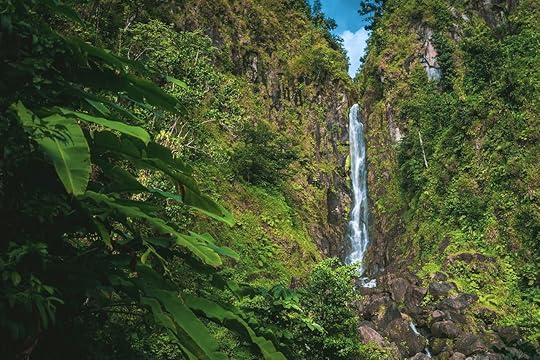
Photo: Hello Bipo/Shutterstock
With the nickname of “Nature Island,” it would make sense that Dominica is a leader in sustainable tourism throughout the Caribbean. The country was among the first to join the Sustainable Destinations Alliance for the Americas (SDAA). The alliance takes tourism dollars and puts them to work protecting coastlines and natural areas in its member countries, with Dominica standing as a model for how the program can be implemented successfully.
The country’s tourism industry worked alongside the nonprofit Sustainable Travel International in 2014 to evaluate sustainability performance on a total of 118 different factors to advise policymakers and business owners. Following the appraisal, goals and action points were laid out across the tourism sector not only to protect natural spaces but to improve the country’s waste management system in the Indigenous Kalinago Territory and develop improved composting capabilities throughout the tourism sector. A pilot program is underway, with results expected to minimize the footprint of travelers and locals alike by keeping waste out of the ocean and other natural spaces. The hope is that the next time you dive in Dominica, there won’t be a plastic bag blocking your view of the sea life.
5. Slovenia

Photo: Roxana Bashyrova/Shutterstock
The Slovenian government launched its “Green Scheme of Slovenian Tourism” to unite the country’s urban and mountain destinations, as well as other tourism spots, under an umbrella of eco-friendly initiatives to promote sustainable tourism development. The initiative ranks its domestic destinations as Gold, Silver, and Bronze as rated by the international Green Destination Standard. Ratings are based on factors such as environment & climate, social well being, nature & scenery, and the sustainability of businesses and the hospitality sector. More than 100 Slovenian destinations from municipalities to hotels to beaches have earned at least the Bronze ranking.
Travelers can now head nearly anywhere in the country and stay in certified “Green” accommodations, visit sustainably managed attractions, and wander along clean beaches or mountain trails. The result is that travelers are producing fewer carbon emissions than they would’ve when visiting a destination that hadn’t made these efforts. 
More like thisSustainabilityThe 9 most amazing green walls around the world
The post These 5 destinations are making the return to global travel way more sustainable appeared first on Matador Network.

How to avoid Netherlands quarantine

Prospective travelers to Amsterdam are about to catch a break, thanks to a new pre-flight testing program put together by Delta and KLM.
Starting on December 15, Delta Air Lines and KLM Royal Dutch Airlines will be implementing a COVID-19 testing program on their flights from Atlanta, GA, to Amsterdam. The program will allow passengers to get tested multiple times before and after the flight, and a series of negative tests would result in an exemption from the Netherlands’ 14-day quarantine requirement.
Those participating in the program will take a COVID-19 PCR test five days before their arrival in Amsterdam, followed by a rapid antigen test before boarding in Atlanta, and then a second PCR test upon arrival in Amsterdam.
Pieter Elbers, president and CEO of KLM, said in a statement, “This is a very important and great step forward. Until an approved working vaccine is available worldwide, this testing program represents the first step towards the international travel industry’s recovery […] All stakeholders need to work together on a systematic approach to rapid testing and build these tests into the passenger experience, so quarantine measures can be lifted as quickly as possible. This is fundamental to restore passengers’ and governments’ confidence in air travel.”
On December 19, Delta will also launch a pre-flight testing program to Rome, which would similarly allow passengers to skip Italy’s mandatory quarantine. 
More like thisTravel SafetyCan we trust negative COVID-19 tests as a green light for travel? We asked a travel doctor.
The post New testing program will allow US travelers to go to the Netherlands without quarantine appeared first on Matador Network.

What is the Surva Festival?
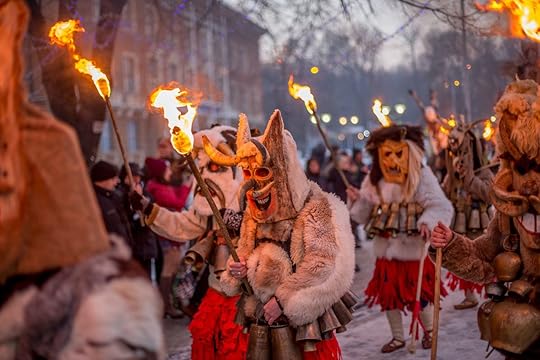
Men wearing terrifying masks depicting demons with twisted horns, long noses, and protruding teeth swing violently back and forth. Their trance-like dance down the streets of Pernik, Bulgaria, is accompanied by the chaotic sound of the bells they wear around their belts. While it looks like a Halloween parade for adults, the event has nothing to do with the beloved fall holiday; Bulgaria’s Surva Festival, also known as the International Festival of the Masquerade Games, is a celebration not meant to conjure evil spirits but to chase them away.
When does the festival take place and what are its roots?

Photo: Diyana Georgieva/Shutterstock
The Surva Festival is an annual, two-day celebration and contest held in the small town of Pernik located in eastern Bulgaria, just 30 minutes from the capital city of Sofia. The event takes place exactly 49 days before Eastern Orthodox Easter so the precise date is determined on a yearly basis as Easter itself shifts, but it is generally held in the second half of January. The Pernik Festival first took place in 1966 and has gained international popularity thanks to the participants’ intense performances and elaborate costumes.
Bulgaria, a small Balkan nation founded in 681 CE, has a rich folklore tradition filled with superstitions. Up until the 19th century, sudden misfortune was generally attributed to evil spirits. Even to this day, when somebody breaks a limb or loses their job, their grandmother might say that a jealous person cast an evil spell on them, known as uruki. The role of the Surva Festival is precisely to scare any ill-mentioned spirits away and bring good luck, but it’s also a fun celebration of Bulgarian folklore.
Who participates in the festival and what happens during the it?

Photo: GEORGID/Shutterstock
During the festival, unmarried men and women from different folklore regions of Bulgaria and Europe are welcome to take part in the event, which consists of dancing, games, and the act of surva itself. Participants are judged for their costumes and performances.
Male performers are known as kukeri. They dress in elaborate costumes that involve large, scary masks depicting the devil. Their garments consist of a nosiya, a traditional Bulgarian ensemble, and poturi, which are traditional shoes from the 18th century. Many of the men wear oversized fuzzy costumes made of wool or fur with a set of bells hanging from their belt. The furry costume symbolizes the connection between man and nature. The size of the costume — which is often much too big and heavy to fit comfortably — is meant to emphasize the intensity of the threat that it represents. Others wear masks decorated with beads and embroideries, or costumes of papier-mâché depending on their local traditions.

Photo: R R/Shutterstock
The women, on the other hand, are dressed in much lighter attire that consists of a nosiya with a long skirt, flowers in the hair, and traditional leather tsarvuli as footwear.
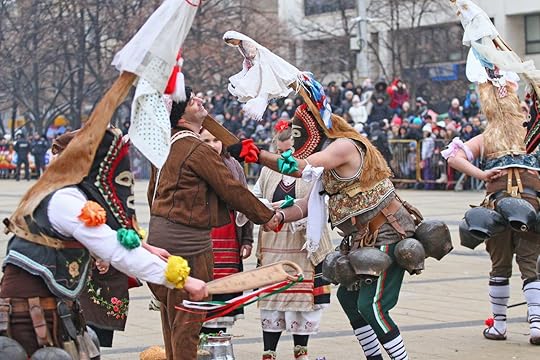
Photo: R R/Shutterstock
The Surva Festival includes elaborate dancing, perfectly-staged fictional fights between good and evil, and the carrying of lit torches at night to chase the evil away.
The act of surva itself, known as survakane, consists of participants named Survakar to lightly tap festival attendees on the back with a tree branch decorated with ornaments made of cotton, gold or silver coins, flowers, and colorful string, most often red. The gesture is meant to bring good luck and prosperous health in the upcoming year. According to tradition, the person who has received the tap should reward the Survakar with a few coins or a bill for their service.

Photo: Damian Hadjiyvanov/Shutterstock
In a typical Bulgarian fashion, the celebration is complete with large tables covered in food ranging from grilled kebapcheta and kyufteta (traditional grilled sausage and meatballs), to the crumbly, cheesy, and buttery pastry known as banitsa, and copious amounts of plum brandy.

Photo: Boyan Georgiev Georgiev/Shutterstock
The Surva Festival is a deeply cherished tradition in Bulgaria. Due to its nature of well-wishing and the showcase of local tradition and artisanal attire, it continues to draw an average of 6,000 people or about 100 participating groups from every folklore region of Bulgaria. In 2015, the Pernik Surva Festival was inscribed on UNESCO’s Representative List of the Intangible Cultural Heritage of Humanity. 
More like thisFashionBulgaria’s folk dress is more than a beautiful garment. It displays personal history.
The post Bulgaria’s Surva Festival is a scary parade of monsters that has nothing to do with Halloween appeared first on Matador Network.

New underwater tunnel Faroe Islands

Composed of 18 separate islands, many of the Faroe Islands used to be difficult to access, but today, there’s no need to hop on a ferry or helicopter every time you want to visit the neighboring islets thanks to an impressive tunnel network.
Now, a new tunnel is making travel between two of the largest islands even easier. An underwater tunnel connecting the islands of Streymoy and Eysturoy is in the works, connecting the capital city of Tórshavn on Streymoy with the towns of Runavik and Strendur on Eysturoy. Currently, there is only one tunnel connecting the two islands and it takes travelers over an hour to drive between the two towns — now that time will be cut to just 16 minutes.

Photo: Eystur- og Sandoyartunlar
The new tunnel, opening on December 19, is 613 feet below sea level and is 6.8 miles long. To make driving the tunnel as scenic as driving the rest of the islands, the underwater roundabout that will allow travelers to drive to either Runavik or Strendur from the capital will feature artwork by Faroese artist Trondur Patursson, consisting of sculptures and light effects, the BBC reported.
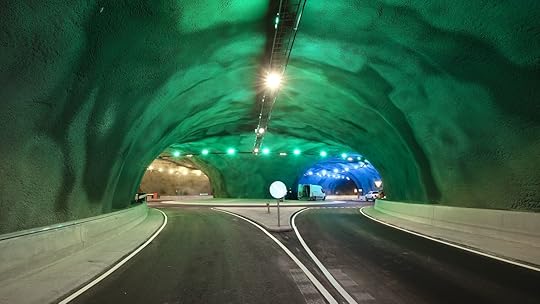
Photo: Eystur- og Sandoyartunlar
The new tunnel is reportedly the largest infrastructure project ever undertaken on the Faroe Islands. When it opens there will be a $12 toll, though locals can sign up for a subscription to reduce the cost. 
More like thisRoad TripsIsland hopping by car in the wild Faroe Islands
The post The Faroe Islands’ new underwater tunnel will have sculptures and light effects appeared first on Matador Network.

Winter thrills, Yellowstone Country
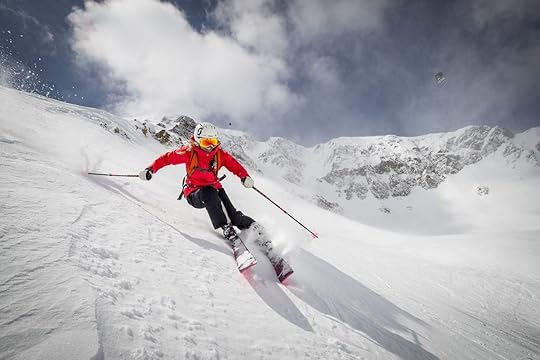
Yellowstone Country Montana is never anywhere close to as busy as the national park with which it shares its name. But come winter, when even the park empties to a fraction of its summertime crowds, this Montana region becomes a beautifully quiet winter wonderland. Social distancing is a cinch, yet there remains so much to do, see, and explore.
Of course, visitors still need to be Montana Aware — please pack that mask — but you’re here for alone time on the slopes and trails anyway. Make the trip, and this is how you’ll find yourself celebrating the most wonderful time of the year.
1. Nordic skiing the mountains and forests
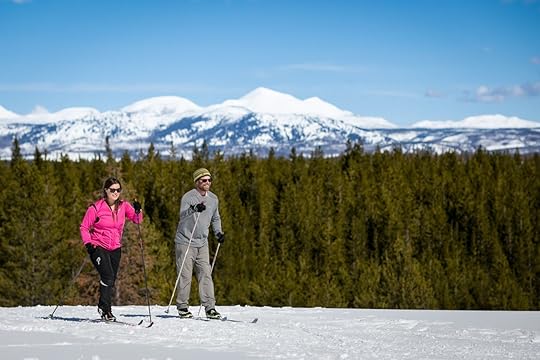
Photo: Lauren Anderson / West Yellowstone
You know Glacier is stunning, you know Yellowstone is unreal — now imagine cross-country skiing the backcountry powder between them. Big skies, fresh mountain air, some of the most gorgeous landscapes in the country, and no crowds to dampen the sense of wild. Because there are so many options to choose from, here are a few places to point your radar:
The Rendezvous Ski Trails begin right in the town of West Yellowstone, winding along the edge of the park through dense forests and open meadows for over 20 miles. If you’re bringing along Fido, the not-quite five-mile Boundary Trail is a super-scenic, dog-friendly add-on.
Stay at Lone Mountain Ranch — near Big Sky Resort — and there will be over 50 miles of groomed skate and classic ski trails out your door. This is no walk in the valley either: You have over 2,200 vertical feet of woodlands, meadows, and hills to conquer.
Bozeman is another Nordic skiing hotspot, and while you could definitely ski in town, go a bit south for the 28-mile round-trip stretch to the Moser Divide and Mystic Lake. Known as the Bozeman Creek/Sourdough Canyon Trail, it’s nice and wide, and can be easily broken up into sections, too.
2. Snowshoeing for the views
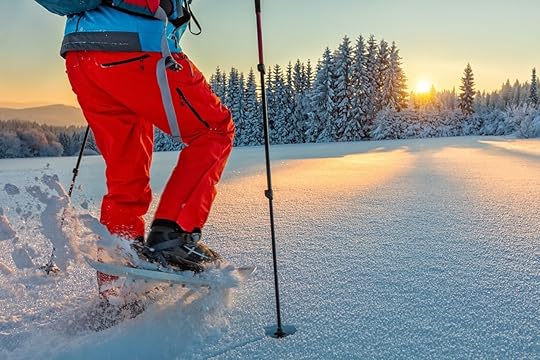
Photo: Jagcz / Dreamstime.com
While it can be tempting to look at Nordic trails and think, I could snowshoe those!, plodding snowshoes ruin the carved tracks for skiers. Luckily, this isn’t a problem — Yellowstone Country is covered in designated snowshoe trails, too.
The Ousel Falls Trail, which asks for only 0.8 miles of your time, leads you across a fork of the Gallatin River, through Custer-Gallatin National Forest, and to a 100-foot waterfall. You can also get to the trail from Big Sky’s town center, turning the trek into a healthy 5.6-mile round trip.
At Madison Buffalo Jump State Park, a quick 0.4 miles takes you to a high limestone cliff, where Indigenous peoples drove herds of bison off the edge, giving the park its name. And not to be skipped, the Riverside Ski Trail is open to snowshoers — it starts in West Yellowstone and follows the Madison River, a relaxing, scenic trek with views of both the Gallatin and Madison mountain ranges.
3. Downhill skiing world-class slopes
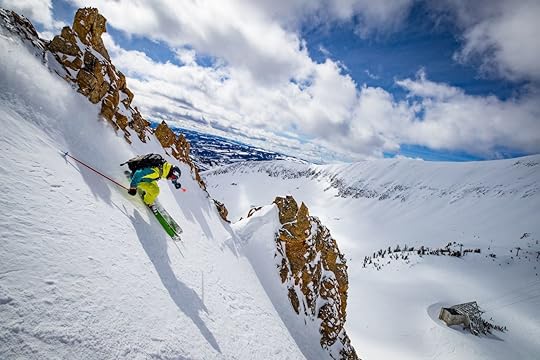
Photo: Jeff Engerbretson / Big Sky Resort
Collectively, Yellowstone Country has almost 10,000 acres of skiable terrain across three world-class resorts: Big Sky Resort, Bridger Bowl, and Red Lodge Mountain. Here’s the rundown:
Big Sky comes in at nearly 6,000 acres, making it one of the largest ski resorts in the country. Seeing some 400 inches of powder a year, it’s on the Ikon Pass and has an après scene that rivals its incredible slopes.
Bridger Bowl, well known for its steep chutes (and great deals), has 75 marked runs, no blackout dates, and sits just outside the hip college town of Bozeman.
Red Lodge is “basecamp for the Beartooths,” Montana’s wildest mountain range. It’s the most laid-back of the three, great for families and those looking for uncrowded runs.
4. Sleigh ride experiences
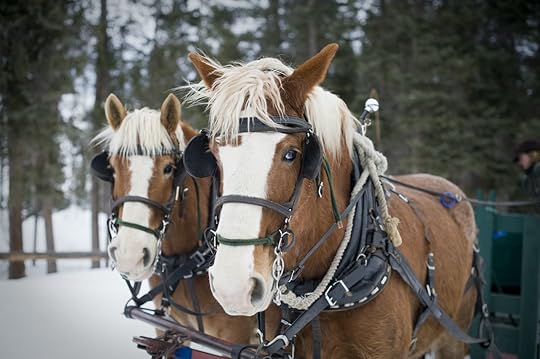
Photo: Lone Mountain Ranch
By day, you’re shush-shushing through the backcountry snow, but by night you’ll want to clip-clop. A horse-drawn sleigh ride through Gallatin National Forest is Montana at its best: quiet, timeless, ethereal. Add a stop for hot cocoa with the folks at Bozeman Sleigh Rides, and it’s pretty hard to beat.
Alternatively, guests of Lone Mountain Ranch, in Big Sky, can opt for a 20-minute sleigh ride up to a backcountry cabin, where you’ll sit down to a crackling fire — and Montana-raised prime rib.
5. Sledding with your pack
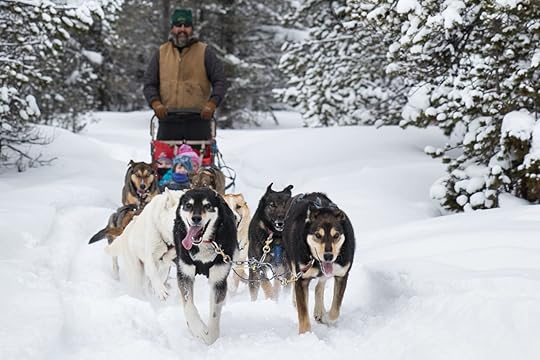
Photo: West Yellowstone
Or maybe horses don’t clip-clop fast enough, and you’d rather “Mush!” Dog sledding through the forest, over frozen lakes, to hot springs or your yurt — all with an adorable pack of huskies — could convert even the most adamant cold-weather Scrooge into winter’s biggest fan.
Local outfitters can set you up with half-day, full-day, or even overnight excursions to places far off the map. It’s up to you how hands-on you want the experience to be — yes, you can take the reins yourself.
6. Snowmobiling through the wilderness
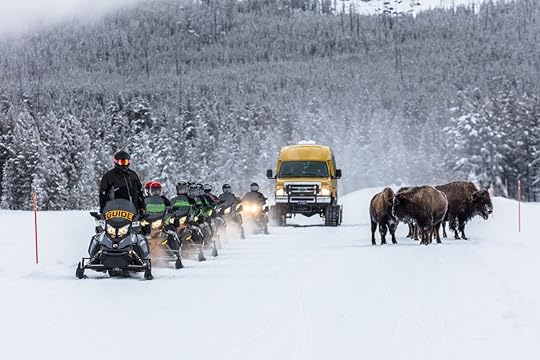
Photo: NPS / Jacob W. Frank
In Yellowstone Country, there are practically more snowmobiling trails than people — some 1,000 miles skirt, snake, and wind through the region. Many start right in town, others deep in the backcountry of the national forests. Hook up with one of the area outfitters — perhaps in West Yellowstone or Big Sky — and here’s where you could be headed:
The Big Sky Snowmobile Trail runs for 123 miles through the Gallatin Mountains. Pick a section suited to your experience level — they vary — and hit the quiet backcountry slopes.
West Yellowstone’s Madison Arm Loop is ideal for national park visitors (and beginners). Its 20 miles take you out to the Madison River and Hebgen Lake, arguably the region’s most accessible, most scenic area outside the national park.
If you’re here later in spring, head to Cooke City, where the snow season lasts well into June. Free-riding up Henderson Mountain is an unforgettable experience.
7. Soaking in geothermal hot springs

Photo: Bozeman Hot Springs
The Yellowstone region has more geothermal activity than anywhere else on the planet, so it’s easy to understand why winter here — despite the alpine temperatures — still smokes and steams in the right places.
For a wild spot, check out Boiling River — it’s in the national park proper, in the Mammoth area. Yes, it’s legal to soak here, and no, it’s not actually boiling. The natural hot springs mix with the colder waters of the Gardner River, making for a warmth that’s just about right.
Back in civilization, the Bozeman Hot Springs allow for maximum social distancing: There are 12 pools across the complex, along with both dry and wet saunas. And at Chico Hot Springs, you’ll find five-star dining, a full day spa, and plenty of snowshoeing and cross-country skiing opportunities, in addition to multiple opportunities for a fine soak.
8. Ice-climbing waterfalls
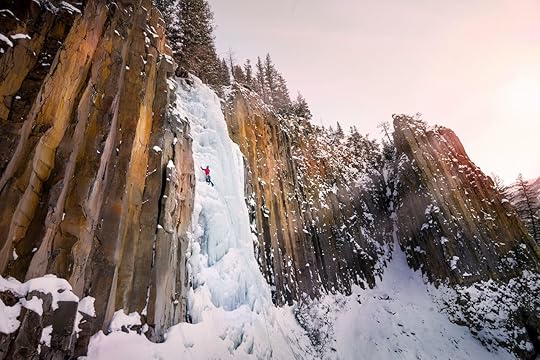
Photo: Shutterstock/David A Wells
Maybe you’ve rappelled down waterfalls somewhere tropical– but have you ever climbed up one when frozen? Hyalite Canyon, just outside Bozeman, is the place to practice your vertical skills: Nearly 200 pitches can be found here, making this the most concentrated ice-climbing spot on the continent. For avid climbers, “Cleopatra’s Needle,” “Black Magic,” “Mummy Cooler,” and “Winter Dance” are a few of the best routes in the entire world.
With a guide — which anyone will need — even beginners can take to the icy curtains. You wanted a socially distanced winter adventure to remember, right? 
The post 8 adventurous ways to celebrate winter in Yellowstone Country Montana appeared first on Matador Network.

December 4, 2020
Jose Cuervo Express luxury train

Sipping tequila in Mexico should be on the list of any fan of good drinks and good times. Enjoying tequila in its home country is a memorable experience in and of itself, after all. But drinking tequila on a luxury train through the agave fields between the towns of Guadalajara and Tequila, the birthplace of the famous drink? That’s a bucket-list-worthy experience.
On December 5, Mundo Cuervo’s Jose Cuervo Express will start regular service between the two towns. One of the train cars is what the brand dubs the Elite Wagon. The whole train is stocked, of course, with plenty of quality spirits to make it a tequila drinking experience unlike any other.
The Jose Cuervo Express has been shuttling people in style for years now, and it seems to keep getting better every year. Everything starts in Guadalajara — Mexico’s second largest city located near the center of the state of Jalisco. The destination, Tequila, is about 40 miles northwest. You could spend countless days digging into the culture (and drinks) of both destinations — Tequila’s famous La Capilla cantina alone is worth a trip — but the train is the best option for anyone who loves the journey as much as the destination.

Photo: Mundo Cuervo
The most premium option is the Elite Wagon. Trips run every Saturday for $166, and the Elite Wagon has space for 37 people between the lounges and tables. There’s also an open cocktail bar. Those in the premium section can taste Jose Cuervo’s Reserva de La Familia, which is an ultra-premium sipping tequila made at the La Rojeña Distillery. Floor-to-ceiling views only make the tequila and cocktails served onboard taste even better. Tickets can be booked on the Mundo Cuervo website.
Though the train starts up again on December 5, space is limited due to the pandemic. Full service will resume when it’s safe to do so, as well as an additional excursion to La Rojeña once the train makes it to Tequila.
All in all, there are few better hands-on experiences for anyone who loves trains, tequila, and drinking tequila on trains. 
More like thisSpirits + CocktailsHow the simple Tequila Coke made this Mexican bar one of the best in the world
The post This new, ultra-luxe Tequila Train is a dream come true appeared first on Matador Network.

Beautiful winter cabins

If you’re lucky enough to be one of those people who can work remotely or if you have some vacation days to use up this winter, there’s no better time to leave your cramped apartment and the city behind to get away from it all in the wild of the Great Smoky Mountains. Airbnb has dozens of listings for charming cabins near Great Smoky Mountains National Park in North Carolina and Tennessee, but we’ve selected the crème de la crème for you to have the cozy winter escape you deserve.
1. Secluded cabin with sunset views in Sevierville, TN
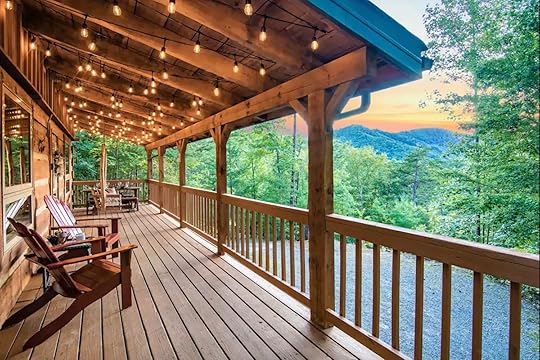
Photo: Airbnb
This log cabin has everything you need to enjoy a relaxing stay in the Great Smoky Mountains: privacy, a fireplace, a front porch with exceptional views of the mountains and sunset, and an outdoor hot tub surrounded by romantic lights. There’s even a porch swing where you can sip your morning coffee or your digestif while keeping your eyes peeled for a sighting of local wildlife, including bears.
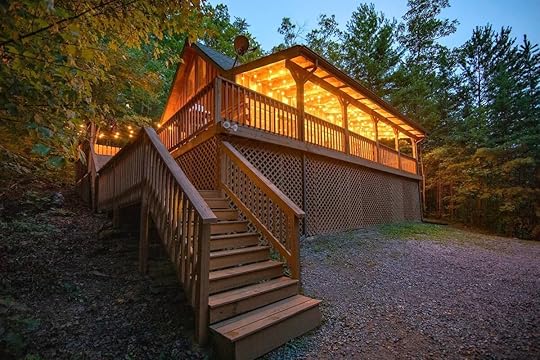
Photo: Airbnb
The cabin can accommodate six guests, so it’s just as practical for a couple wanting a quiet vacation as it is for a small family. Guests have easy access to the gated community’s pool (seasonal), tennis and basketball courts, playground, and frisbee golf area for when they want to step out of this haven of tranquility. While this cabin in the woods is secluded, it’s only an eight-minute drive to Pigeon Forge, a 15-minute drive to Gatlinburg, and a 12-minute drive to Great Smoky Mountains National Park.
2. Rustic cabin only minutes from the Blue Ridge Parkway, Pigeon Forge, TN
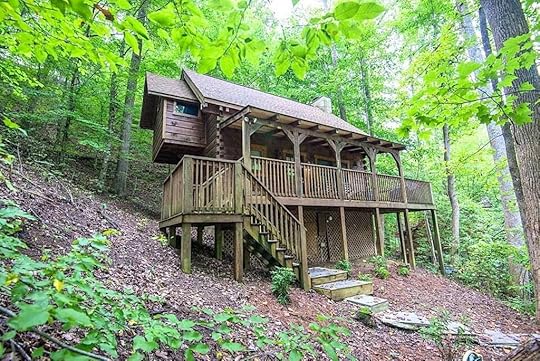
Photo: Airbnb
This cabin is hidden away in the woods off the scenic Blue Ridge Parkway, so guests have all the privacy and silence they can wish for. To make the most of your stay, sit on the porch swing or one of the rocking chairs and enjoy the rustling of the leaves and the chattering of the wood’s wildlife. Alternatively, you can lounge in the indoor jacuzzi tub while taking in the views from the large windows that surround it.
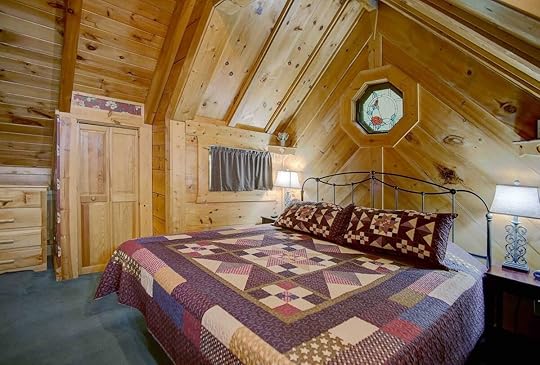
Photo: Airbnb
Inside, the snug and simple wooden decor will help you kick back and relax when you’re not visiting the nearby attractions. The cabin is only 1.5 miles to the Main Parkway, five miles to Dollywood, 11 miles to Gatlinburg, and 12 miles to the Great Smoky Mountain National Park.
3. Cozy red log cabin in Bryson City, NC
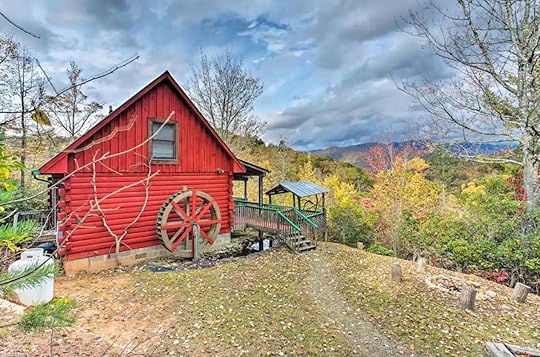
Photo: Airbnb
This red log cabin in Bryson City may only be fit for two guests with its one bedroom and one bathroom, but what it lacks in space, it makes up for in comfort and views. Ideal for honeymooners in search of privacy, the cabin has an outdoor hot tub fit for a warm soak under the stars, as well as a covered porch with a swing from where you can admire the vast mountainous landscape.
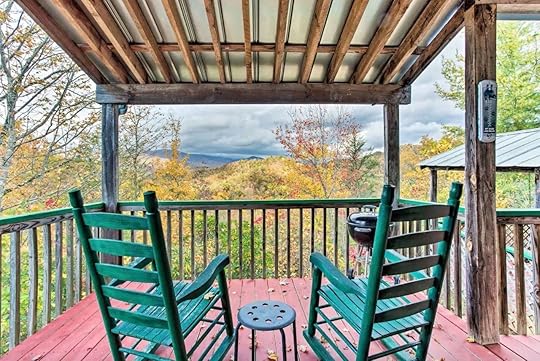
Photo: Airbnb
Inside, the gas fireplace and loft bedroom make things very cozy. There are hiking trails nearby and the cabin is only minutes from the Great Smoky Mountains National Park and 15 minutes from Bryson City.
4. Creekside cabin in Cosby, TN
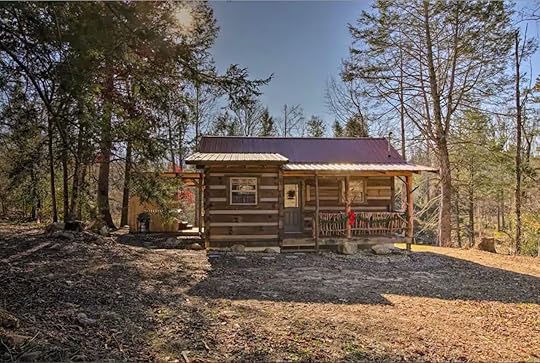
Photo: Airbnb
This one bedroom cabin in Cosby, Tennessee, at the base of the Smoky Mountains, is as cute from the outside as it is from the inside. With custom woodwork throughout (most of which made from salvaged materials), from the interior barn doors to the beds and kitchen table, this cabin has a rustic feel but is filled with modern and stylish amenities. Hosts know how to transport guests to the mountains with country-feel soft furnishings, featuring plaid and bear prints — even the shower curtain looks like birch bark for a complete look.
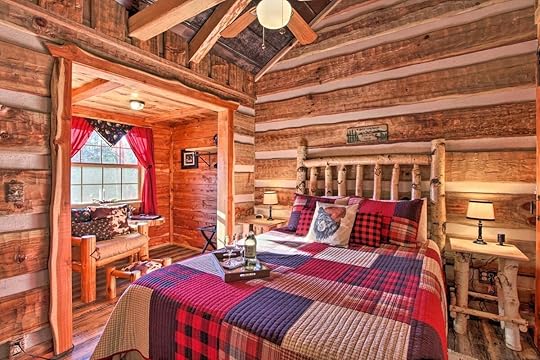
Photo: Airbnb
The covered back deck has an outdoor hot tub with views on Caney Creek for a private spa session in nature. If you’re discreet enough, you might even be treated to the sight of a deer or bear strolling nearby. The cabin is located 30-40-minutes from Gatlinburg and Pigeon Forge.
5. Modern cabin in Gatlinburg, TN
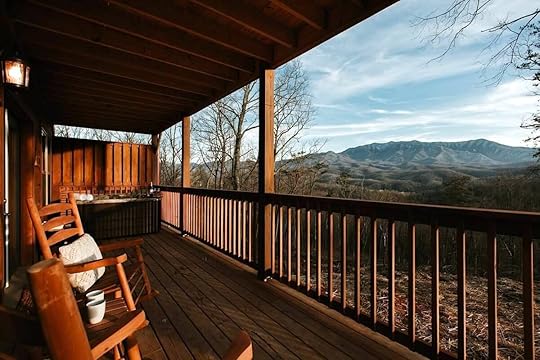
Photo: Airbnb
Lookout Loft is a modern and luxurious cabin that can accommodate up to eight guests and is located only three miles from downtown Gatlinburg. Because it was completed in January 2020, everything in the cabin is brand new and spotless, but that does not take away from its charm. With wood throughout, from floor to ceiling, the mountain vibe won’t pass you by. The tall ceilings and the mezzanine provide the spacious living space needed for large families or groups.

Photo: Airbnb
The loft bedroom has stunning views of Mt. Lecomte, and there are two large porches with a hot tub and more views of the mountains. Outside, a fire pit with seating allows guests to take in the views while staying toasty.
6. Creekside, multi-deck cabin in Sevierville, TN
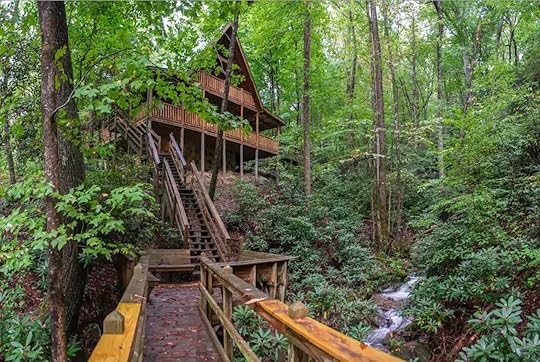
Photo: Airbnb
Secluded in the woods, this cabin is the perfect spot for indoor-outdoor living. The several decks offer tranquil views of the forest and the creek below for guests to enjoy breakfast, coffee breaks, aperitifs, supper, and more to the sound of birds. The covered hot tub by the stair is a great way to feel as one with nature while staying warm and comfortable, while the walkway and bridge make a lovely morning stroll.

Photo: Airbnb
Inside, the decor is rustic, and the layout is family-gathering friendly with a large dining table, a spacious kitchen, a pool table, and a good-size sunroom.
7. Secluded cabin with 650 feet of covered deck in Bryson City, NC

Photo: Airbnb
Those who want to vacation in the Great Smoky Mountains do it to spend time in nature and enjoy the beauty of the mountains. With this cabin nicknamed “Heaven on Earth” located on five acres of remote land and featuring 650 square feet of deck, you’ll do just that. The panoramic views from the house are breathtaking and you won’t hear a peep from other human beings as the cabin is surrounded by mountains only.
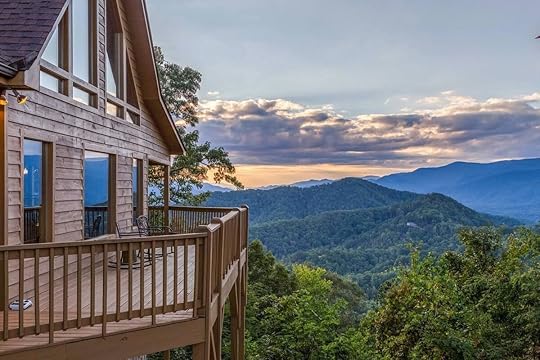
Photo: Airbnb
To spend even more time outside, there’s an outdoor fire pit and a hot tub on the deck. If you’d rather stay inside, the woodstove will keep you warm. This unique cabin can accommodate six guests. 
More like thisParks + WildernessHow to use Asheville as your base for Great Smoky Mountains National Park
The post 7 gorgeous cabins to rent in the Great Smoky Mountains for a cozy winter vacation appeared first on Matador Network.

Christmas in July cruise
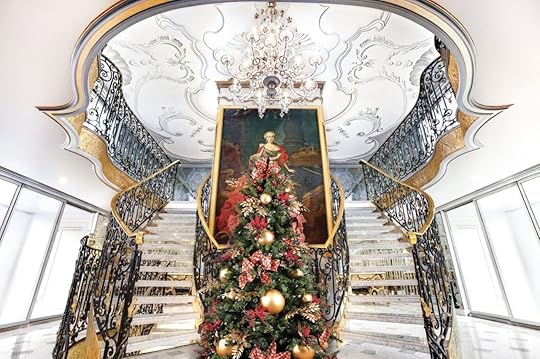
While exploring the amazing Christmas markets of Europe is out of the question this December due to the pandemic, 2021 promises the ultimate do-over. The luxury river cruise company Uniworld Boutique River Cruises is offering “Christmas in July” cruises along the Danube River, which is exactly what it sounds like.
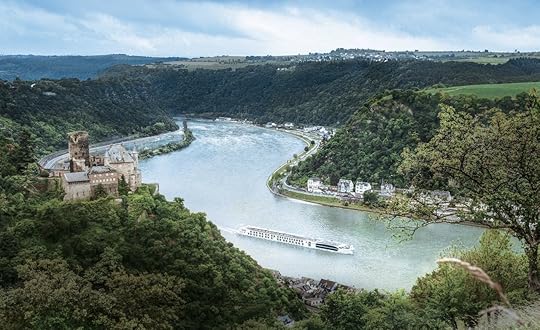
Photo: Uniworld
Passengers will be able to celebrate Christmas a bit late, but with all the necessary trappings of the holiday season. There will be Christmas markets onboard featuring local products, holiday decor, and classic Christmas activities like making gingerbread, holiday cocktails, and tree ornaments. Holiday movies will play at the onboard cinema, and you can even take advantage of a Christmas photo session with Santa. The kitchen staff will serve up “winterized” holiday food and drinks, including frozen hot chocolate, chilled eggnog, and spiced mulled wine.

Photo: Uniworld
The “Christmas in July” seven-day cruises will take place aboard the S.S. Maria Theresa and depart on July 11 and July 18, 2021, stopping in Budapest, Vienna, Salzburg, Passau, and other cities along the way.
If you book by January 8, you’ll save $500 per person — so it’s never too early to start planning for a late Christmas. 
More like thisFestivals12 places around the world that go all out with holiday lights
The post Redo Christmas this summer by taking a “Christmas in July” cruise down the Danube appeared first on Matador Network.

Matador Network's Blog
- Matador Network's profile
- 6 followers



